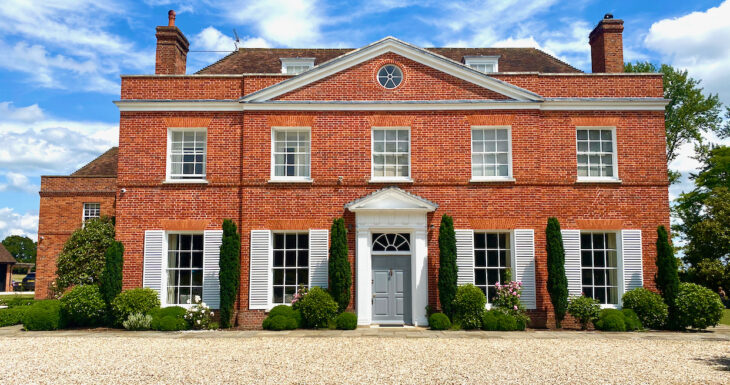The Old Rectory
A Georgian delight in splendid garden and grounds
The Hatch, Burghfield, Reading RG30 3TH

The original site of The Old Rectory can be traced back to the 9th century when Queen Emma of Normandy, the mother of Edward the Confessor, was proprietor of the manor house. She gifted the manor to Winchester Old Cathedral and it was confiscated from the diocese after the Norman Conquest. The site was then transferred to Ralph de Mortemar and remained in the family until the death of his descendent Edmund, Earl of March in 1425. His nephew was the heir to the land, but after being convicted of a capital crime, he lost the manor and it was passed to the crown.
The manor house, known as Nether Court, was the original building on the site of which The Old Rectory stands today. It was sub-tenanted in the 12th century to the family of Thomas de Burghfield , who proudly took his name from the village, and the manor was given a the royal title of ‘Regis’ by King Edward IV. Other known tenants of Regis Nether Court include Sir Nicholas De La Beche (1291 -1345), and his family who were influential and powerful landowners during the reigns of Edward II and Edward III.
The Old Rectory as we know it today is a Grade II* listed Georgian house built around the bones of the original Nether Court. The building was built in the late 16th century, altered and extended in the early 18th century and again in the early 20th Century with the addition of the north west block. Flanked by four chimneys which service the 18th century fireplaces, the brick house has a hipped old tile roof, a narrow string at the first floor and wood cornice with fluted frieze and a brick parapet.
In 1950, The Old Rectory was bought by Ralph Merton, an industrialist, and his wife Esther. A keen and talented gardener, Esther transformed the grounds using her love of unusual shrubs and flowers, to create a garden that was famously always in bloom. With yew hedges, formal lawns and spectacular herbaceous borders, the gardens were open to the public to visit, explore and enjoy the wonderful oasis Esther had created.
